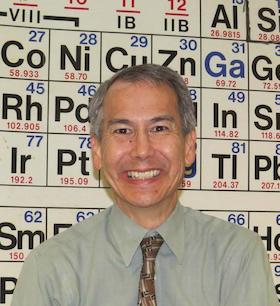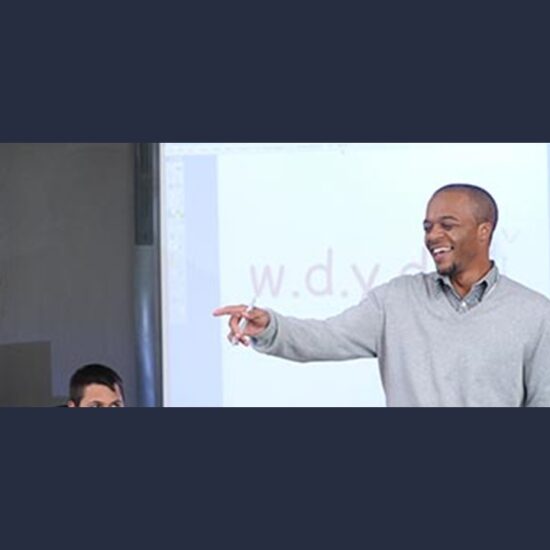How is Get the Facts Out addressing diversity, inclusion, and access?
It’s important for teachers to reflect the demographics of their students; numerous studies have shown that having a teacher from a similar background is beneficial for students. For example, black students are more likely to graduate from high school and attend college if they have a black teacher in elementary school [1], and women with female math and science teachers tend to get higher grades and are more likely to continue studying the subjects [2, 3].
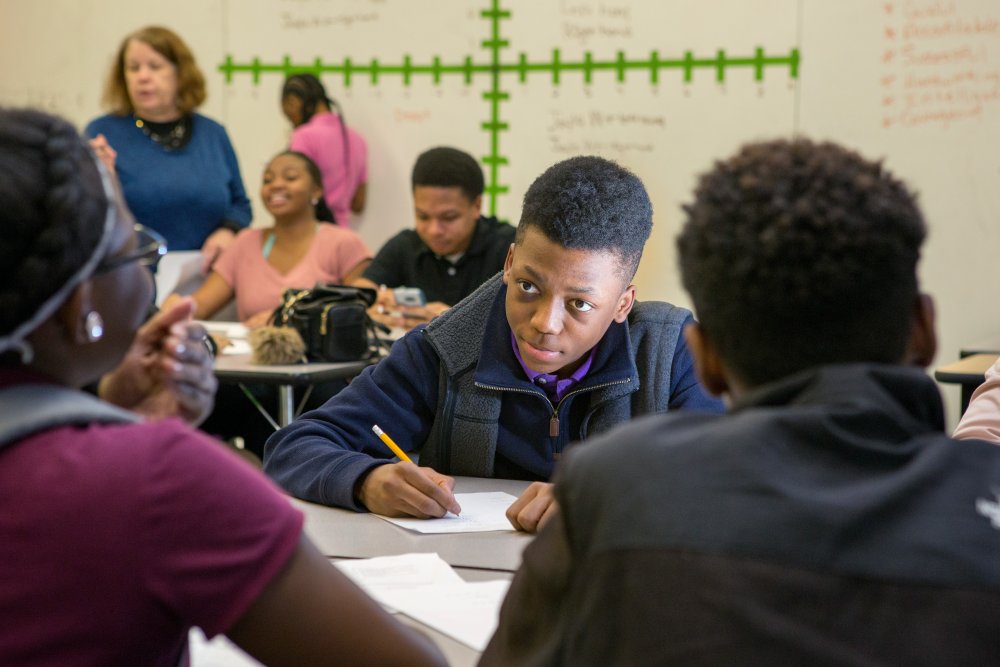
The Problem
Teachers in the United States are overwhelmingly white and female, which does not reflect the general U.S. population and means that many students may never have a teacher who matches their race and gender. Diversifying the pool of qualified teachers will provide more role models who resonate with a wider variety of students, especially those from underrepresented groups. In this article we will share how the Get the Facts Out project is considering these issues in our efforts to recruit new teachers.
Below is a snapshot comparing race of the U.S. Teacher Labor Force compared to the U.S. Labor Force:
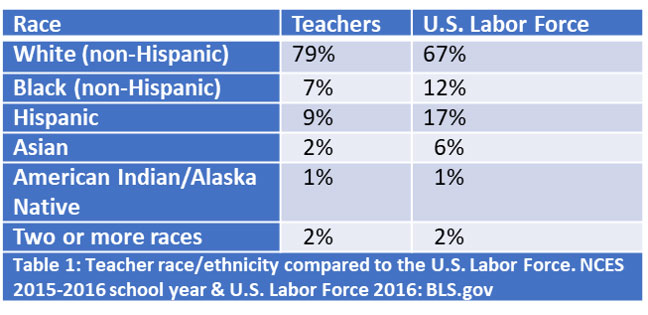
As shown above, the U.S. teacher labor force has an uneven racial distribution compared to the national average. In addition, teachers are generally female. The following figure, taken from the National Center on Educational Statistics, shows that over three quarters of U.S. public school teachers were female during the 2017-2018 school year, and that this imbalance is getting worse over time at the secondary level.
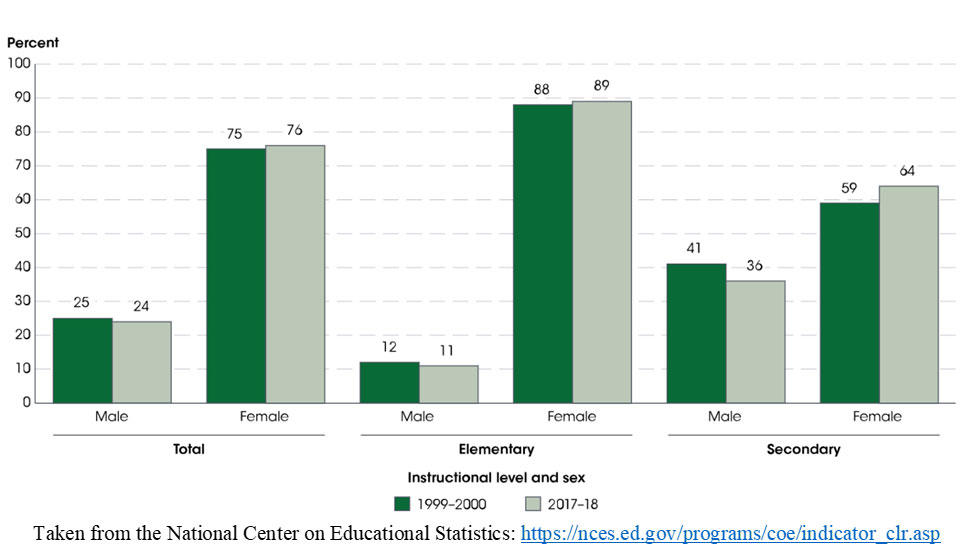
Given the lack of diversity in the teaching profession, as well as the lack of current diversity among teachers, what can we do as educators to increase diversity?
“What can we do as educators to increase diversity?”
Get the Facts Out DI&A
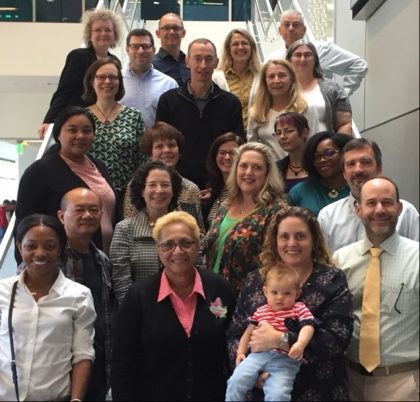 Members of the Get the Facts Out project have considered this issue carefully in our efforts to recruit new teachers, and GFO is dedicated to reaching all people who have an interest in teaching.
Members of the Get the Facts Out project have considered this issue carefully in our efforts to recruit new teachers, and GFO is dedicated to reaching all people who have an interest in teaching.
We are working to develop best practices for recruiting underrepresented groups into the profession. To do this we are making a focused effort to learn about the reasons these groups choose other careers.
We develop all of our teacher recruitment materials with careful thought around audience, creating multiple versions of our resources that each reflect images from different groups. We then test all of our teacher recruitment materials with diverse groups of students and faculty.
To do this the six GFO Comprehensive Study Sites were specifically chosen to represent a wide range of demographics.
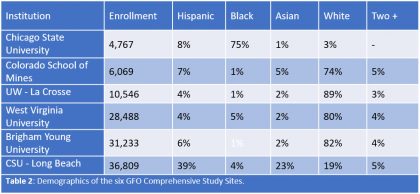
Table 2 shows the demographics of the six GFO Comprehensive Study Sites where researchers conduct focus groups with both students and faculty each year. These sites were chosen to represent a range of U.S. institutions, and each site brings a unique voice to our project. At each institution, we conduct focus groups to learn about local perceptions of the teaching profession, and during our visits, students and faculty (separately) participate in focus groups where we ask for their reactions to each of our GFO teacher recruitment resources.
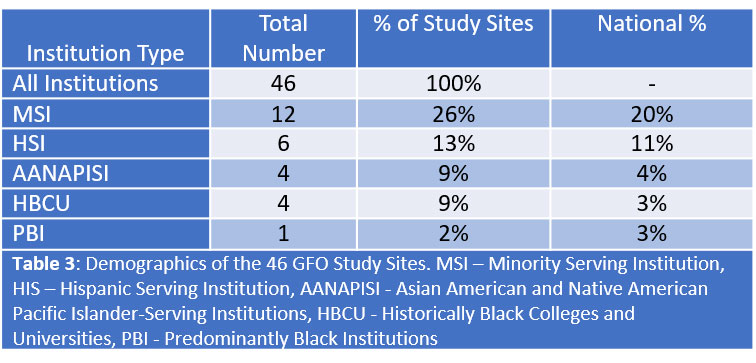
In addition, we have analyzed the demographics of our 46 active Study Sites. GFO Study Sites collect survey data each year on student and faculty perceptions, on recruitment efforts, and on teacher preparation enrollment. We then analyze our national data sets by demographic group including race/ethnicity, gender, geographic location, and institution type.
Table 3 shows the numbers and percentages of different types of Minority-Serving Institutions (MSIs) among the GFO Study Sites. Approximately 20% of degree-granting institutions in the United States are designated MSIs, while 26% of the GFO Study Sites have this designation. While our current study sites are quite diverse, we hope to recruit additional sites in the near future to further strengthen our data from underrepresented groups, potentially including Native-American Serving Non-Tribal Institutions and Tribal Colleges and Universities.
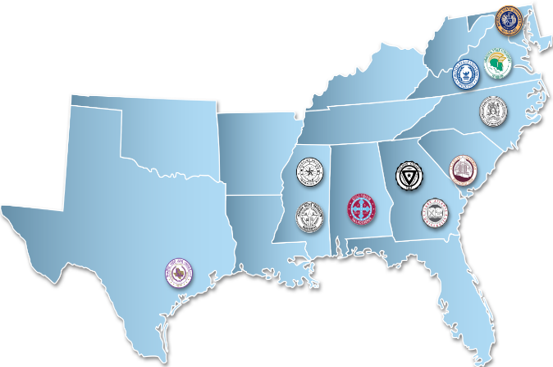 As part of our study site recruitment efforts, we recently began working with HBCUTeach to recruit more diverse teachers. HBCUTeach is a collaboration between UTeach, the National Mathematics and Science Initiative, the United Negro College Fund, and eleven Historically Black Colleges and Universities with the goal of helping those institutions to evaluate and improve their STEM teacher preparation programs. GFO will collect perceptions data from these institutions, conduct interviews and focus groups with students and faculty, and provide customized teacher recruitment resources to these sites to complement and further strengthen their current programs.
As part of our study site recruitment efforts, we recently began working with HBCUTeach to recruit more diverse teachers. HBCUTeach is a collaboration between UTeach, the National Mathematics and Science Initiative, the United Negro College Fund, and eleven Historically Black Colleges and Universities with the goal of helping those institutions to evaluate and improve their STEM teacher preparation programs. GFO will collect perceptions data from these institutions, conduct interviews and focus groups with students and faculty, and provide customized teacher recruitment resources to these sites to complement and further strengthen their current programs.
Get the Facts Out is dedicated to recruiting more STEM teachers in the U.S., and we have a strong interest in increasing diversity among the teachers who we recruit. This will have positive outcomes for all STEM students by exposing them to more viewpoints, and it is likely to increase the diversity of students who choose to major in STEM by providing additional role models for underrepresented groups.
We want to know:
What suggestions do you have for increasing diversity, inclusion, and access in the GFO project? Please send your thoughts and suggestions to getthefactsout@mines.edu. We look forward to hearing from you!
References
[1] S. Gershenson, C. M. D. Hart, C. A. Lindsay, & N. W. Papageorge. The Long-Run Impacts of Same-Race Teachers. IZA Institute of Labor Economics. Retrieved May 4, 2021 from http://ftp.iza.org/dp10630.pdf. [2] T. Breda, J. Grenet, M. Monnet, & C. van Effenterre. Do Female Role Models Reduce the Gender Gap in Science? Evidence from French High Schools. 2021. Retrieved May 4, 2021 from https://www.nber.org/papers/w14959. [3] S. E. Carrell, M. E. Page, & J. E. West. Sex and Science: How Professor Gender Perpetuates the Gender Gap. National Bureau of Economic Research. Retrieved May 4, 2021 from https://halshs.archives-ouvertes.fr/halshs-01713068/document. This work is supported by the NSF under Grant Nos. 1821710 & 1821462. Any opinions, findings, and conclusions or recommendations expressed in this material are those of the author(s) and do not necessarily reflect the views of NSF.
This work is supported by the NSF under Grant Nos. 1821710 & 1821462. Any opinions, findings, and conclusions or recommendations expressed in this material are those of the author(s) and do not necessarily reflect the views of NSF.


